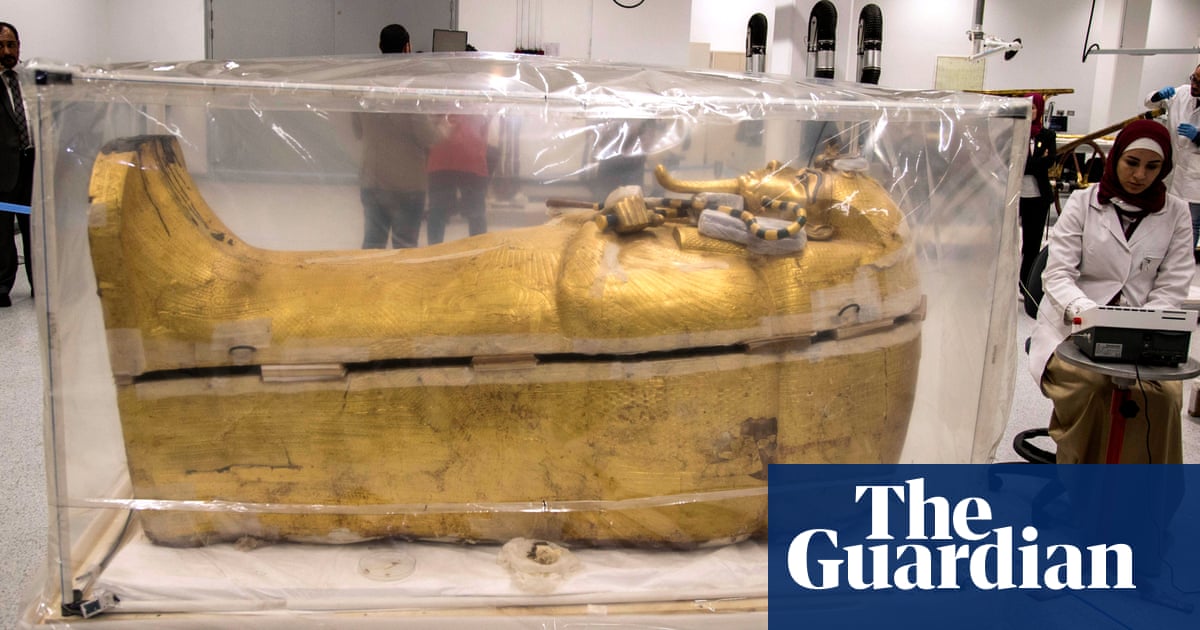The novelist and poet Thomas Hardy was fascinated by Stonehenge, using what he described as “the temple of the winds” both as a setting for one of his most striking scenes and as a lifelong inspiration, a pathway back into ancient times.
In what is being billed as a unique performance, the life and work of Hardy is being showcased at the great stone circle in Wiltshire as part of Salisbury international arts festival.
The performers, including Anton Lesser, best known for appearances in Game of Thrones and The Crown, will be reading from Hardy and depicting scenes from his life in front of the stones as the audience listens through headphones.
An orchestra will play music, ranging from the sort of folk tunes Hardy may have been familiar with to pieces by Gustav Holst and Peter Warlock.
Lesser said A Beautiful Thread: Thomas Hardy in Words and Music was full of “love, life and laughter”, and said it meant he could say he had done a gig with “the Stones”, though not the rolling ones.
It is believed to be the first time that a performance incorporating Hardy’s life and work has been staged at Stonehenge.
Lesser said: “Hopefully it’ll be lovely weather and you’ll have this marvellous atmosphere as the evening develops with the light changing and these wonderful words of Hardy.”
While he knew the novels, Lesser said he had been “transported” when he delved into Hardy’s poetry. “The poems are like little dramas. They draw you into the whole world within a few lines.”
He began turning down the pages of poetry he liked as he studied for the performance. “And if you saw the spine of the book now, almost every page is marked – it’s ridiculous.”
Angelique Richardson, a professor of English at the University of Exeter and a Hardy expert, said the writer was drawn to the stone circle.
“He was fascinated by the past, by mystery and memory, and by the persistence of the past into the present,” Richardson said.
In Tess of the d’Urbervilles, the tragic protagonist comes upon Stonehenge while on the run after committing murder. She says: “It hums … hearken!” Hardy writes: “The wind, playing upon the edifice, produced a booming tune, like the note of some gigantic one-stringed harp.” Tess falls asleep on a stone at this “solemn and lonely” place and when she awakes is arrested.
Richardson said Hardy often returned to the subject of Stonehenge, and once said: “Personally I confess to a liking for the state of dim conjecture in which we stand with regard to its history.”
Following a visit he mused that the “misfortune of ruins” was to “be beheld nearly always at noonday by visitors, and not at twilight”.
He also wrote to the Times in support of an appeal in the 1920s for funds to buy land near Stonehenge to prevent building close to it.
Richardson, who leads the Hardy’s Correspondents project at Exeter, which hopes to make more than 5,000 letters sent to Hardy and his first and second wives available to the public, said that in his library at his home, Max Gate in Dorchester, he had volumes featuring Stonehenge including Black’s Guide to Dorset, Salisbury, Stonehenge, Etc.
Mark Chutter, the chair and academic director of the Thomas Hardy Society, said Stonehenge was very important to the writer “not just in terms of his understanding of the neolithic but also the pagan world as well.
“Hardy stages his novels very much as a performance, in almost a theatrical way, so it makes sense for him to be performed at Stonehenge.”
A Beautiful Thread will be performed at Stonehenge on 28 May and 1 June in Dorset as part of the Thomas Hardy Birthday Weekend celebrations, organised to mark the 185th anniversary of his birth.

 4 hours ago
6
4 hours ago
6













































